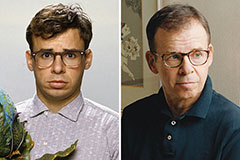Extended Reach, Consistent Premium Quality
Celebrated for its devotion to excellence, MyCigarsASAP.com presents a refined selection of premium cigars from some of the most distinguished brands in the industry. With the expansion into West Hollywood, the company proceeds to offer instant access to a broad selection of luxury cigars, continuing the same exceptional quality control that has made it a favorite among cigar lovers.
Cigar Delivery West Hollywood
CALL (800) 654-7959
Cigar lovers in West Hollywood can select from popular brands including: • Arturo Fuente – Supplying a diverse array of skillfully handmade cigars. • Montecristo – Famous for its velvety, consistent mixtures that suit multiple flavor preferences. • Cohiba – Recognized globally for delivering a full-bodied, hearty smoking experience. • Davidoff – An emblem of elegance, featuring cigars of peerless steadiness and grade. • My Father's Cigars – Providing powerful, intense tastes that are modeled after Cuban cigar culture. • Ashton – Famous for its mellow, sophisticated taste, made from the best Dominican tobacco leaves. • Padron – Esteemed for its intense tastes and superb craftsmanship, including the much-coveted 1964 Anniversary Series. • Romeo y Julieta – A timeless option known for its consistent tastes and dependable quality.
This broad array assures that MyCigarsASAP.com serves a wide variety of preferences, with cigars procured from celebrated regions such as Nicaragua, the Dominican Republic, and Honduras.
Focus on Freshness and Excellence
Caliber is at the core of MyCigarsASAP.com’s processes. To secure that every cigar arrives in optimal condition, the company utilizes exacting quality control procedures, including precisely controlled storage and expertly selected inventory. Every order is processed with attention, securing that the cigars are delivered fresh and full of flavor. Moreover, their staff of cigar experts is on standby to provide individualized recommendations, providing a personalized and informative experience to every customer.
Immediate and Convenient Delivery to West Hollywood
With this recent service growth, MyCigarsASAP.com reinforces its standing as one of the speediest premium cigar delivery services locally. Whether for a unplanned event, a arranged function, or a peaceful evening at home, patrons in West Hollywood can now enjoy fast cigar deliveries within 30 to 60 minutes after ordering. This immediate service delivers a heightened convenience to West Hollywood’s cigar community.
Cigar Delivery West Hollywood
CALL (800) 654-7959
About MyCigarsASAP.com
MyCigarsASAP.com is a Los Angeles-based cigar delivery service aimed at providing fast, steady access to a high-quality selection of cigars. With a focus on quality, freshness, and personalized service, the company has earned a reputation as a trusted source for cigar lovers across the region. Now, with broadened service to West Hollywood, MyCigarsASAP.com keeps at the forefront of delivering first-class cigars efficiently and accurately.
For more intel or to submit an order for prompt delivery, call (800) 654-7959.
Cigar Beginnings and Past: A Trip Through Ages
Cigars, often connected with lavishness, convention, and artisanry, carry a deep legacy tracing back centuries. The progression of cigars embodies the interplay of traditions, expedition, and trade dealings. This composition investigates the enchanting roots and background of cigars, following their path from indigenous rites in the Americas to developing into a world-spanning sign of refinement.
The Early Beginnings: Cigars in Pre-Columbian Cultures Cigars have their primitive genesis in the original civilizations of the Americas. Historic nations, including the Mayans, Aztecs, and Taínos, are believed to have consumed wrapped tobacco fronds. Unearthed evidence reveal scenes of Mayans using on pottery pieces from to around the 10th century. The designation “cigar” likely stems from the Mayan term “sikar,” which denotes to smoke.
In these early societies, tobacco was not only a social product but also held religious significance. Mystics and tribal leaders inhaled tobacco during holy ceremonies, considering it allowed them to connect with the other world. Tobacco was also used medicinally, offering soothing for various ailments, such as aches and gut issues.
Tobacco’s Arrival to Europe: Columbus and the New World The European legacy of cigars launched with Christopher Columbus’s arrival in the Americas in 1492. His crew discovered local people using twists of withered tobacco leaves, an strange practice that puzzled them. Columbus and his men took examples back to Spain, marking the inception of Europe’s engagement with tobacco.
The practice of puffing quickly spread across Europe. Spaniards adopted it first, and by the 16th century, tobacco use turned into popular among European nobility. Early cigars were crude relative to modern versions, but their fascination moved to Italy, Portugal, and France. Tobacco was also viewed as a universal medicine, supposed to fix a host of sicknesses from fevers to lethargy.
Cuban Influence: Birthplace of the Modern Cigar Cuba’s place in cigar background is essential, turning tobacco from a native commodity into a worldwide phenomenon. In the 17th century, Cuba turned into the epicenter of cigar generation due to its suitable climate and lush soil, particularly in the Vuelta Abajo region. Cuban cigars quickly gained a reputation for unparalleled quality and mastery.
By the 1800s, the Cuban cigar industry was prospering, and the term “Havana cigar” was synonymous with excellence. Experienced artisans, known as torcedores, fashioned cigars by hand, honing techniques that remain largely unchanged today. Many of the world’s most distinguished cigar brands, such as Montecristo, Cohiba, and Romeo y Julieta, ascribe their source to this era.
The Growth to North America and Europe The demand for cigar s spread beyond Cuba’s borders by the 18th and 19th centuries. Tobacco plantations started forming in other Caribbean islands, such as the Dominican Republic and Jamaica, as well as parts of Central America, including Honduras and Nicaragua. These regions are still cigar powerhouses today, each imparting individual characteristics to their products.
In Europe, Spain and the Netherlands were major consumers and producers of cigars. The Dutch established a thriving cigar industry, importing Cuban tobacco and blending it with native leaves to develop special styles. Meanwhile, cigar inhalation in the United States was affiliated with status and masculinity. The rise of industrialization saw cigar factories spread across the U.S., particularly in Florida, where Cuban immigrants delivered their artisanry and traditions.
Cigars and Social Status: From Aristocracy to the Everyday Man Throughout past, cigars have been closely associated to status, wealth, and celebration. By the 19th century, cigars were a essential among European and American aristocrats. Monarchs such as King Edward VII of England were well-known cigar aficionados, further enhancing their popularity among the elite.
In the United States, cigars became related to political power and business success. Industrial magnates like Andrew Carnegie and John D. Rockefeller were often photographed inhaling cigars, reinforcing their image as signs of wealth. Prominent figures such as Winston Churchill famously embraced cigars, contributing to their prestige.
However, cigars were not restricted to the upper class. The growth of the cigar industry led to the making of reasonably priced options, making cigars available to the working class. Cigar clubs and lounges arose, offering areas where people from all walks of life could partake in a smoke.
The Cuban Embargo and the Rise of New Markets The Cuban cigar industry met a major transformation in 1962 when the U.S. government, under President John F. Kennedy, imposed a trade embargo on Cuba. Cuban cigars, previously a staple among American cigar enthusiasts, became illegal in the U.S., creating both scarcity Get More Info and mystique around them. As a result, many Cuban cigar makers left to neighboring countries like the Dominican Republic, Nicaragua, and Honduras, where they continued their trade using Cuban-seed tobacco.
This geopolitical change unlocked new markets and added to the rise of premium cigars outside Cuba. Today, cigars from these regions are acclaimed for their quality, challenging Cuban cigars in flavor, construction, and diversity.
Cigars in Popular Culture and Cinema Cigars have secured their place in popular culture, often signifying power, victory, and sophistication. Hollywood endorsed the cigar as an icon, featuring it prominently in films. Characters like Tony Montana in Scarface and Winston Churchill in The Darkest Hour copyright the affiliation between cigars and authority.
Moreover, cigars are a regular at celebrations, marking occasions such as weddings, business deals, and the birth of children. Cigar lounges and clubs continue to serve as congregation points for socializing and networking, bolstering their cultural relevance.
The Modern Cigar Renaissance The late 20th and early 21st centuries have recorded a resurgence of cigar culture. The 1990s “Cigar Boom” in the U.S. saw a renewed interest in premium cigars, with new aficionados joining the scene. Artisanry, diversity in blends, and specialized techniques have propelled the modern cigar renaissance.
Boutique cigar brands have earned popularity, offering individual blends that appeal to a burgeoning demographic of younger smokers. Additionally, the rise of cigar lounges and online cigar shops has made it more accessible for consumers to explore different varieties from around the world. Events like Cigar Aficionado’s Big Smoke further reveal the lasting draw of cigars in contemporary culture.
Cigars and Sustainability: The Future of the Industry As the cigar industry advances, sustainability has become a main point. Environmental factors, including climate change and deforestation, alter tobacco cultivation. Many cigar manufacturers are adopting eco-friendly practices by using sustainable farming methods and advocating reforestation efforts.
Fair labor practices are also gaining traction, with companies assuring fair wages and safe working conditions for the farmers and artisans involved in cigar production. The attention on sustainability attempts to maintain the industry’s legacy while accommodating the expectations of socially conscious consumers.
Conclusion: A Legacy of Tradition and Craftsmanship From the holy customs of indigenous tribes to the luxurious lounges of today, cigars have come a long and renowned path. Each draw of a premium cigar encapsulates with it the legacy of generations of craftsmanship, tradition, and cultural significance. Whether relished by royalty, industrial tycoons, or modern-day devotees, cigars continue to represent more than just tobacco—they encapsulate a lifestyle, a celebration, and a bond to history.
As the world of cigars transforms, one thing remains constant: the appeal of reclining, lighting up, and delighting in the ingenious combination of tradition and innovation enveloped in each leaf.
The Cigar Making Technique: A Odyssey from Yesteryears to Contemporary Era
The Cigar Manufacturing Process: A Journey from Past to Present
Introduction
The cigar, any timeless symbol of elegance and polish, has its own rich history that spans centuries and continents. From its early origins among original peoples to its modern incarnation as this global industry, the process of crafting a cigar is a blend of technique, technology, and tradition. This article investigates the intricate journey of cigar manufacturing, comparing the methods of the past with those of today, and emphasizing how innovation and heritage interact in this engaging craft.
I. Historical Overview of Cigar Manufacturing
A. Early Origins of Cigars
The history of cigars originates to the indigenous peoples of the Caribbean and Mesoamerica, who grew tobacco and used it in religious and medicinal practices. When Christopher Columbus arrived in the New World in 1492, he and his crew noticed the native Taíno people of Cuba and Hispaniola shaping and smoking dried tobacco leaves. This practice attracted the Europeans, who imported tobacco back to the Old World, where it quickly gained popularity.
B. Traditional Cigar-Making Techniques
1. Tobacco Cultivation
In the early days, tobacco cultivation was a manual and labor-intensive process. Farmers counted on natural cycles and traditional knowledge to grow tobacco plants. The seeds were transplanted by hand, and the plants necessitated meticulous care to thrive.
2. Leaf Selection and Fermentation
After harvesting, the tobacco leaves received a natural air-curing process. They were placed in curing barns to dry slowly, facilitating the chlorophyll to break down and the leaves to acquire their characteristic brown color. Fermentation came next, where the leaves were arranged in piles called pilones. The natural heat generated by microbial activity diminished harshness and highlighted the rich flavors.
3. Rolling Methods
Cigar rolling was a craft transmitted through generations. Skilled artisans, known as torcedores, crafted cigars entirely by hand. They selected filler leaves, secured them with a binder leaf, and coated the bunch with a high-quality wrapper leaf. This meticulous process needed precision and an eye for quality.
C. The Role of Cuban Cigar Tradition
Cuba became closely associated with premium cigars due to its ideal climate and soil conditions, particularly in the Vuelta Abajo region. The country's cigar-making techniques created the standard for quality and craftsmanship. Cuban cigars were eagerly pursued, and the methods developed there affected cigar production worldwide.
II. Modern Cigar Manufacturing Process
A. Advances in Tobacco Cultivation
1. Genetic Selection
Modern agriculture has incorporated genetic selection to enhance tobacco plant qualities. Scientists and farmers join forces to develop tobacco strains resistant to diseases and pests, and with desired flavor profiles. This generates more consistent and high-quality crops.
2. Modern Farming Techniques
Today, tobacco farming utilizes advanced irrigation systems, soil management, and crop rotation to maximize yield and quality. Precision agriculture technologies, such as GPS mapping and drones, assist monitor plant health and optimize resource use.
B. Leaf Processing Today
1. Fermentation Methods
While the fundamental principles of fermentation last, modern facilities govern temperature and humidity with greater precision. This control guarantees uniformity and enriches flavor development. Some producers employ multiple fermentation cycles to refine the tobacco further.
2. Aging and Storage
Post-fermentation aging has developed into a critical step. Tobacco leaves are aged in controlled environments, sometimes for several years, to mellow the tobacco and boost complexity. Aging rooms are equipped with technology to preserve ideal conditions.
C. Contemporary Cigar Rolling
1. Machine-Made vs. Hand-Rolled Cigars
The 20th century saw the arrival of mechanization to cigar production. Machine-made cigars use homogenized tobacco leaf (HTL) binders and wrappers, granting mass production at lower costs. However, premium cigars continue to be hand-rolled, keeping the artisanal tradition.
2. Quality Control
Modern factories carry out strict quality control measures. This includes regular inspections, draw testing to guarantee proper airflow, and sensory evaluations. Technology helps but does not replace the expertise of seasoned inspectors.
D. Innovations in Packaging and Distribution
Advancements in packaging materials guard cigars from environmental factors during shipping. Vacuum-sealed packaging, humidification devices, and sophisticated distribution logistics ensure cigars reach consumers in optimal condition.
III. Comparing Past and Present Methods
A. Technological Advances
Technology has optimized many aspects of cigar manufacturing without decreasing the importance of skilled labor. Mechanization executes repetitive tasks, while artisans concentrate on quality and craftsmanship.
B. Maintaining Tradition in a Modern Industry
Despite technological progress, the essence of cigar-making stays rooted in tradition. Many producers underscore hand-rolled methods and traditional fermentation to copyright authenticity and satisfy aficionados who treasure heritage.
C. Challenges and Opportunities
The industry confronts challenges like regulatory changes, health concerns, and market fluctuations. However, opportunities come up from expanding global markets, premiumization trends, and consumer interest in artisanal products.
IV. The Art of Cigar Making: Preserving Craftsmanship
A. The Role of the Torcedor (Cigar Roller)
Torcedores are revered figures in cigar factories. Their expertise determines the cigar's construction and performance. Training to become a master roller can take years, demonstrating the complexity of the craft.
B. Apprenticeship and Skills Transfer
Many factories operate apprenticeship programs to transfer skills to new generations. This secures the survival of traditional techniques and upholds high standards in production.
C. Cultural Significance
Cigar-making is more than the have a peek at these guys business; it's an cultural heritage in regions like Cuba, the Dominican Republic, and Nicaragua. Festivals, museums, and tours commemorate this legacy, inviting enthusiasts worldwide.
The cigar manufacturing process is a captivating blend of time-honored traditions and modern innovations. While technology has introduced efficiencies and consistency, the heart of cigar-making lies in the hands of skilled artisans who copyright a legacy that traverses centuries. Grasping this journey enriches the appreciation of cigars, not just as products but as personifications of cultural heritage and craftsmanship.
 Rick Moranis Then & Now!
Rick Moranis Then & Now! Julia Stiles Then & Now!
Julia Stiles Then & Now! Karyn Parsons Then & Now!
Karyn Parsons Then & Now! Mason Reese Then & Now!
Mason Reese Then & Now! Lisa Whelchel Then & Now!
Lisa Whelchel Then & Now!